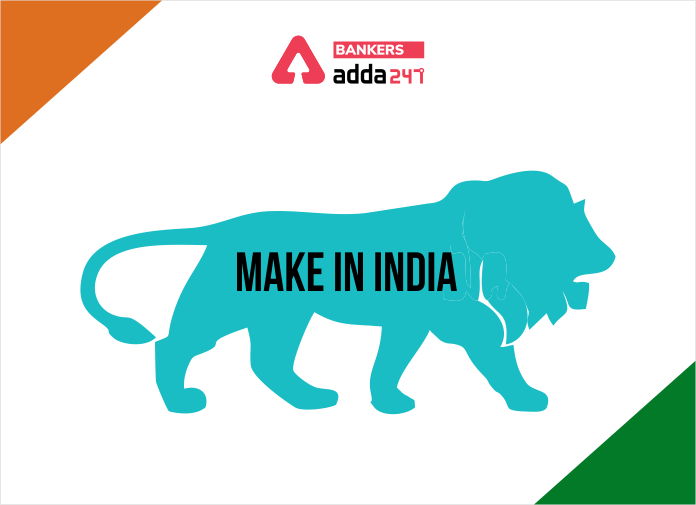Table of Contents
MAKE IN INDIA: Established on September 25th, 2014, by Prime Minister Narendra Modi, Make in India is a government scheme created with the aim of boosting the country’s manufacturing sector while bringing in investment into the country. With the scheme, the government intends to boost the manufacturing sector of India and thereby inculcate economic growth. Additionally, under the scheme, it has been encouraging businesses from other countries of the world to invest into India and get their manufacturing done here, thereby improving India’s “Ease of Doing Business” index as well. The long-term vision of the Make in India scheme is to eventually develop the country into a global manufacturing hub, while also increasing employment opportunities here.
Also Read,
SECTORS COVERED UNDER MAKE IN INDIA:
The Make in India scheme includes 25 focus sectors, namely:
- Aviation
- Automobile
- Automobile components
- Biotechnology
- Chemicals
- Construction
- Defence manufacturing
- Media and entertainment
- Mining
- Oil and gas
- Electrical machinery
- Electronic systems
- Food processing
- IT and BPM
- Leather
- Pharmaceuticals
- Ports and shipping
- Railways
- Renewable energy
- Roads and highways
- Space
- Textiles and garments
- Thermal power
- Tourism and hospitality
- Wellness and healthcare
Get Best Study Material for All Govt. Exams 2020
AIMS OF MAKE IN INDIA SCHEME:
The Make in India scheme of the Government of India has the following aims:
- A rise in the growth of the manufacturing sector by 12 to 14% every year.
- The creation of around 100 million additional jobs in the manufacturing sector by the year 2022.
- An increase of up to 25% in the GDP share of the manufacturing sector by the year 2022.
- The creation of required skill sets amongst the rural migrants and urban poor, which would foster overall inclusive growth.
- Maintaining an environmentally-sustainable growth in the country.
- A rise in the technological depth as well as the domestic value addition in the manufacturing sector.
- Increasing the competitiveness of the Indian manufacturing sector on a global level.
INITIATIVES TAKEN BY MAKE IN INDIA:
Some of the major initiatives taken by the Make in India scheme are:
- In the defence sector, the maximum limit in FDI has increased to 49%.
- Railways, insurance, defence as well as medical devices sectors have been opened up for an increased FDI, or Foreign Direct Investment.
- A 100% FDI under the automated route has been permitted under the construction and specified rail infrastructure projects.
- The Investor Facilitation Cell has been created to assist investors from their arrival in India to the time of their departure in all phases of the investment.
- Steps have been taken to improve India’s “Ease of Doing Business” rank, with the country climbing 23 points in the index to 77th place in the year 2019.
- The government also launched the Shram Suvidha Portal and eBiz portal, along with others.
- The government has also launched plans for the creation of five industrial corridors, with a strategic focus on inclusive development. These corridors are the Delhi-Mumbai Industrial Corridor (DMIC), Amritsar-Kolkata Industrial Corridor (AKIC), Bengaluru-Mumbai Economic Corridor (BMEC), Chennai-Bengaluru Industrial Corridor (CBIC) and the Vizag-Chennai Industrial Corridor (VCIC).
SCHEMES UNDER MAKE IN INDIA:
The Make in India programme also launched several other schemes, which include:
- Skill India
- Startup India
- Digital India
- Pradhan Mantri Jan Dhan Yojana (PMJDY)
- Smart Cities
- Swachh Bharat Abhiyan
- Atal Mission for Rejuvenation and Urban Transformation (AMRUT)
- Sagarmala
- International Solar Alliance (ISA)
- Accelerating Growth of New India’s Innovation (AGNII)



 IBPS Final Result 2025 Coming Out Tomorr...
IBPS Final Result 2025 Coming Out Tomorr...
 Simple Tips to Avoid Common Mistakes In ...
Simple Tips to Avoid Common Mistakes In ...
 Important Topics & Shortcuts for IDB...
Important Topics & Shortcuts for IDB...


